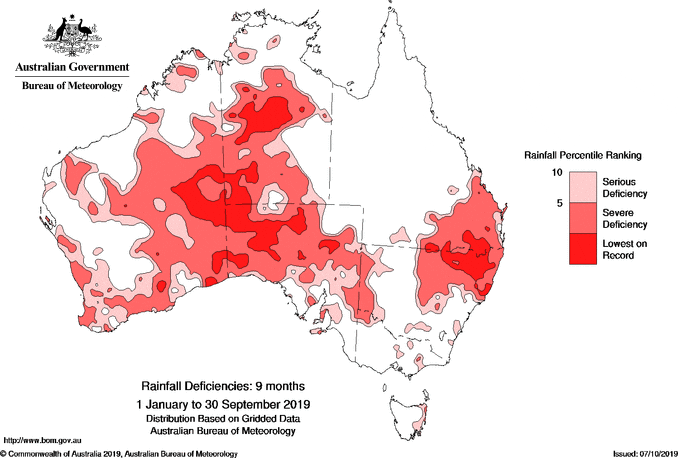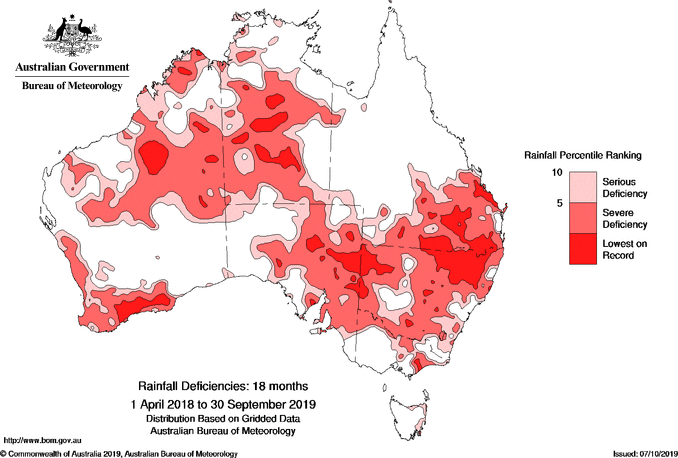SEPTEMBER rainfall was well below average for most of Australia and root-zone soil moisture levels remain low in many areas, according to the latest drought report from the Bureau of Meteorology.
The report says long-term rainfall deficiencies, record-low for some periods, continue to severely limit water resources across the Murray–Darling Basin and water storages in the northern Basin are extremely low, with no significant inflows during September.
Extended dry conditions continue over eastern Australia with rainfall deficiencies affecting most of the New South Wales, Queensland and South Australian parts of the Murray–Darling Basin since the start of 2017.
These longer-term deficiencies extend to parts of the NSW coast, particularly in the Hunter and Illawarra districts, and to much of the eastern half of South Australia from Adelaide northwards.
The deficiencies have been most extreme in the northern Murray–Darling Basin, especially in the northern half of NSW and adjacent southern Queensland, where areas of lowest on record rainfall extend from the Great Dividing Range west as far as Dubbo and Walgett.
Some of the largest rainfall deficiencies have occurred in the upper catchments of some of the major tributaries of the Darling, including the Macquarie, the Namoi–Peel, the Gwydir, and the Border Rivers.
When compared to other 33-month periods commencing in January, the 33 months from January 2017 to September 2019 has been the driest on record averaged over the Murray–Darling Basin (34 per cent below the 1961–1990 average), as well as over the northern Murray–Darling Basin (40pc below average) and for the state of NSW (34pc below average).
All three regions have also been the driest on record for the 21 months from January 2018 to September 2019, whilst the 27 months from July 2017 to September 2019 rank second in all three regions; only the 1900–02 peak of the Federation Drought has been drier.
The last 33 and 21 months have also been the driest on record averaged over the Border Rivers, Macquarie–Bogan, Namoi, Gwydir, and Castlereagh catchments, with the last 21 months also the driest on record for the Moonie, Condamine–Culgoa, and Lower Murray catchments.
South east rain deficiency
Another area of longer-term rainfall deficiencies affects Gippsland, in eastern Victoria, and the east coast of Tasmania.
Both the West Gippsland and East Gippsland districts have had their driest 33 months on record.
Rainfall for the period commencing January 2017 has been lowest on record for much of Gippsland, extending roughly from east of around Sale to around Point Hicks.
Rainfall deficits in 2019 in this region have mostly been less extreme than in 2017 and 2018, but have still been sufficient to reinforce deficiencies at multi-year timescales.
The dry conditions of the last three years have been particularly acute during the cool season, which is important in many regions for generating runoff.
Rainfall for the period from April to September was less than 50pc of average in all three years in 12 of the 30 rainfall districts of NSW.
The Central Western Plains (North), which encompasses Nyngan, Trangie, Gilgandra and Coonamble, has had less than one-third of its average cool-season rainfall in all three years.
Source: BOM





HAVE YOUR SAY